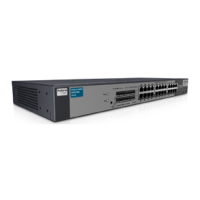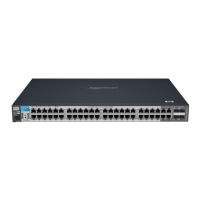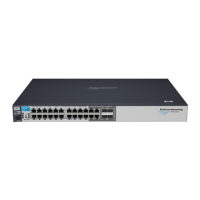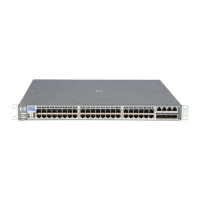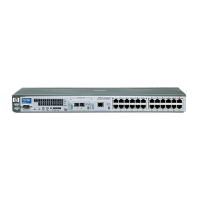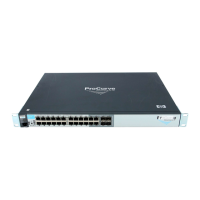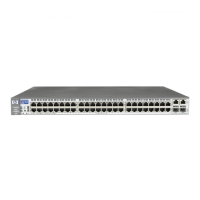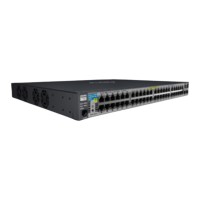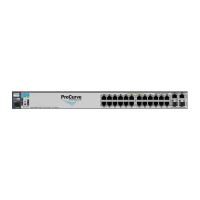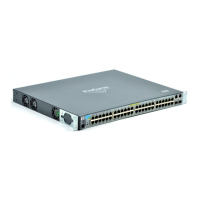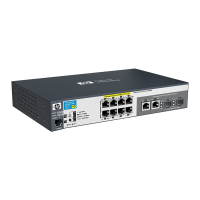
Do you have a question about the HP ProCurve 2810 and is the answer not in the manual?
| Model | HP ProCurve 2810 |
|---|---|
| MAC Address Table Size | 8000 entries |
| Routing Protocol | Static IP routing |
| Jumbo Frame Support | Yes |
| VLAN Support | Yes |
| Uplink Ports | 4 |
| Switching Capacity | 48 Gbps (2810-24G) / 96 Gbps (2810-48G) |
| Throughput | 35.7 Mpps (2810-24G) / 71.4 Mpps (2810-48G) |
| Management | Web, CLI, SNMP |
| Features | VLAN, QoS |
| Form Factor | Rack-mountable |
| Power Supply | Internal |
| Dimensions | 44.25 x 25.4 x 4.32 cm |
| Operating Temperature | 0°C to 45°C (32°F to 113°F) |
| Storage Temperature | -40°C to 70°C (-40°F to 158°F) |
| Humidity | 15% to 95% (non-condensing) |
| Ports | 24 / 48 x 10/100/1000Base-T |
Details the physical components and architecture of the ProCurve Series 2810 switches.
Explains the different types of ports available on the switches, including RJ-45 and mini-GBIC.
Describes the function and meaning of each LED indicator on the switch for status monitoring.
Describes the operation of the Reset and Clear buttons for switch management.
Lists all components included in the ProCurve Series 2810 switch package.
Outlines the step-by-step process for physically installing the switch.
Guidance on selecting and preparing a suitable location for switch installation.
Confirms the switch's basic functionality after initial power-up.
Detailed steps for physically mounting the switch in various configurations like racks or walls.
Guides for connecting the switch to power and network infrastructure.
Guides for connecting network devices to the switch ports.
Guides on establishing a console connection for initial setup and management.
Details how to use the switch's console interface for initial configuration.
Provides guidance on next steps after basic switch configuration.
Offers common solutions for typical problems encountered with the switch.
Explains how to interpret LED status for diagnosing switch issues.
Describes methods for resetting the switch to resolve operational problems.
Information on how to contact support for technical assistance.
Technical specifications related to the physical dimensions and weight of the switches.
Electrical characteristics including voltage and current ratings.
Operating and non-operating environmental conditions for the switches.
Details on the types of connectors supported by the switch.
Compliance information regarding safety standards and certifications.
General safety precautions and warnings for using the equipment.
Electromagnetic compatibility statements for various regions.
Information on proper disposal and recycling of electronic waste.
